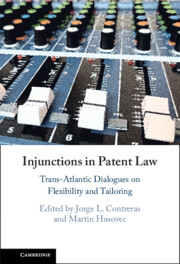Despite their outward differences, all modern legal systems share a number of fundamental features. One of these features is the availability of remedies for injuries that are proven to an adequate legal standard. As explained by Douglas Laycock, one of the preeminent scholars of common law remedies: “The choice of remedy and the measure and administration of the remedy chosen pose a distinctive set of questions – logically separate from the liability determination and usually considered subsequent to that determination – focused on what the court will do to correct or prevent the violation of legal rights that gives rise to liability.”Footnote 1
The law recognizes a wide array of remedies, both civil and criminal, ranging from monetary damages and fines to orders constraining future conduct to imprisonment.Footnote 2 A legal system, embodied by the legislative, executive and judicial branches of government, selects remedies for particular types of harms based on a range of considerations including compensating the injured party, punishing the injuring party, constraining future conduct by the injuring party, and deterring future injurious conduct by others. It is seldom the case that all available remedies are imposed for a single injurious act, but remedies issued in combination are not at all uncommon.
Like most other areas of the law, patent law offers remedies to injured parties – those whose validly issued patents are infringed by others. Broadly speaking, remedies in patent law fall into two categories – damages, calculated by a variety of measures, and injunctions, which legally restrain the infringer’s future conduct. It is not obvious, as a purely logical matter, which of these remedies is preferable in a given situation, or as a general matter. Each has its purposes and can shape individual behavior as well as broader societal incentives and deterrents. This being said, injunctive relief is highly valued by patent holders, sometimes far surpassing the perceived value of monetary relief.Footnote 3
Over the years, different jurisdictions have emphasized one form of remedy over another based on the internal structure of their laws, the position that patents occupy within that structure, and the role that judges, lawyers and political bodies play in making legal determinations. In some jurisdictions, patent law has a manifestly instrumental purpose. For example, patents are authorized under the US Constitution for the express purpose of promoting the progress of science and the useful arts (US Const., Art. I, Sec. 8, Cl. 8). In other jurisdictions, patents are regarded as property rights inherent to individual acts of invention. As a result of differences like these, there is a diversity of approaches to injunctive relief in patent cases.Footnote 4 One aim of this book is to highlight the differences among jurisdictions in this regard, whether rooted in legal doctrine, broader institutional structures or social and professional norms.
In no jurisdiction that we studied is the issuance of injunctions in patent cases a purely automatic process. Even the most rigid legal system provides some degree of discretion or flexibility in this regard under certain circumstances. Flexibility at the remedial stage of an action can help to alleviate inefficiencies otherwise caused by uniformity within the patent system. That is, because patents extend a uniform term of protection, and uniform rights to enforce against infringers, to all patented inventions irrespective of their degree of innovation or usefulness, “society pays too much for numerous innovations that would have been created with less robust protection, while in other cases patent rights are less extensive than would be necessary to induce the creation of certain costly but socially desirable inventions.”Footnote 5
This is the problem of uniformity cost – when the law affords the same legal rights to all inventions, some are invariably protected too much and some are protected too little, resulting in a cost to society with respect to these inventions. But because it is impossible to tailor patent grants to the societal value of individual inventions, tailoring mechanisms that can be deployed in the area of remedies can help to address inefficiencies resulting from uniformity cost.Footnote 6 However, as remedies cannot redefine the scope of patent rights by going beyond the baseline of protection set by the legislature, tailoring and flexibility of remedies are more likely to resolve situations when inventions are protected too much (i.e., a remedy may be tailored to award the rights holder less than the full scope of its legal entitlement, but cannot be tailored to give the rights holder more).Footnote 7
Thus, another goal of this book is to explore the degree to which judges in different jurisdictions employ tools of flexibility and tailoring in the imposition of patent law injunctions. As with the decision to issue injunctions, this set of tools is highly subject to the doctrinal, structural and normative background of individual jurisdictions. Hence, we observe a variety of approaches, both to the issuance of injunctions and to the tailoring of injunctive remedies after the decision to issue them has been made. This variety also demonstrates varying degrees of institutional openness towards judicial reconciliation of fundamental trade-offs implicit in the patent system.
It is not a goal of this book, however, to suggest that strict uniformity among jurisdictions is possible or even desirable. Like other scholars who have considered the issue, we do not suggest that an international treaty or harmonization of legal regimes is a desirable or even feasible goal.Footnote 8 This book demonstrates that injunction practices are embedded in the institutional makeup of each jurisdiction, such that simple legal transplants would be inadequate to address perceived deficiencies in the practices of any given jurisdiction.
Rather, we seek to elucidate existing flexibility mechanisms within the legal frameworks that have developed around the world, to identify their similarities and differences, their probable driving forces, and to analyze trends that may emerge as patent litigation becomes an increasingly global and interconnected enterprise.Footnote 9 We hope that this comparative and analytical study will assist judges and litigators to learn from the diverse approaches to patent injunctions taken by different jurisdictions.

